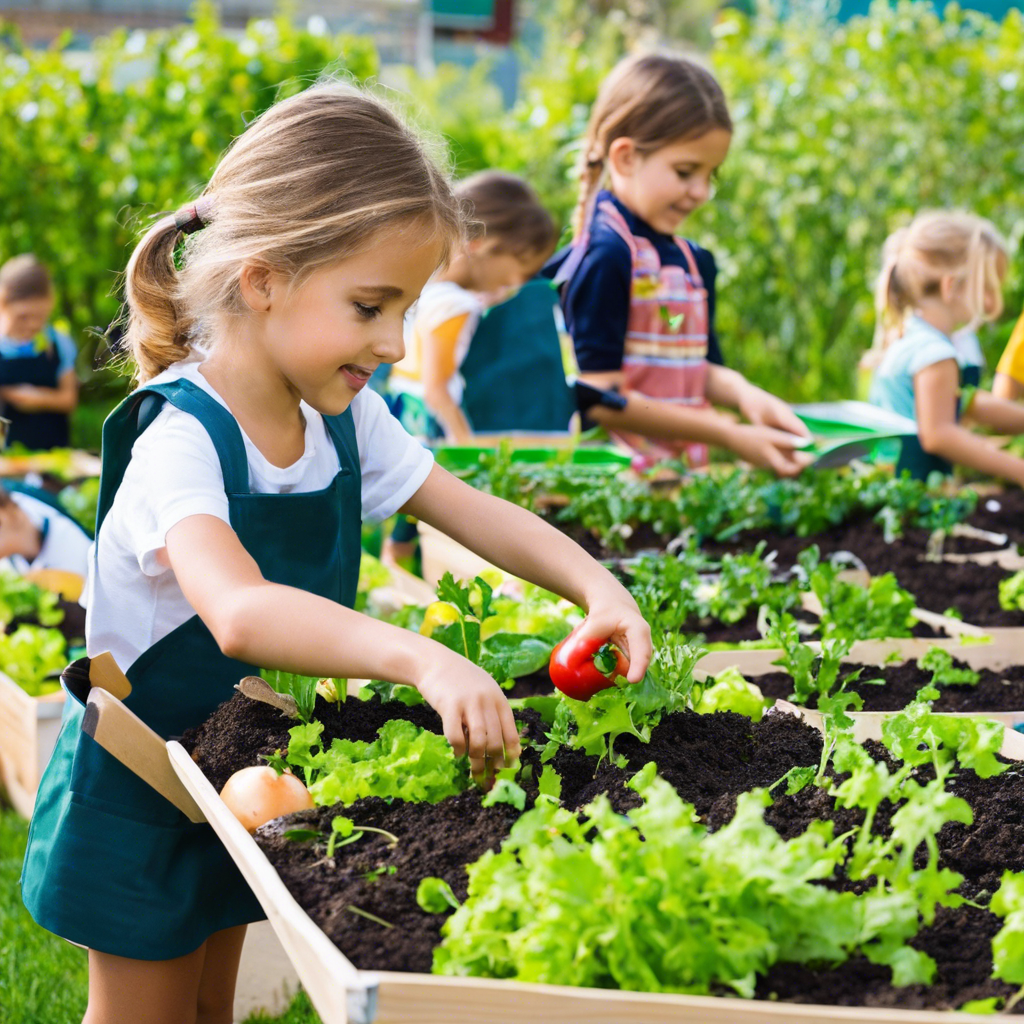School gardens foster healthy eating by providing hands-on learning, connecting students to food sources, and promoting nutritional education.
In an era where childhood obesity rates are rising and concerns about the nutritional value of school lunches persist, many schools are exploring innovative ways to promote healthier eating habits among students. One approach that has gained traction is the implementation of school gardens. These vibrant outdoor classrooms not only connect students with the natural world but also play a pivotal role in fostering an appreciation for fresh, locally grown produce. This article delves into the multifaceted benefits of school gardens and how they contribute to the development of **healthy eating habits**.
The Rise of School Gardens
The concept of school gardens is not entirely new. In fact, its roots can be traced back to the early 20th century when schools in the United States and Europe began integrating gardening into their curricula. However, recent years have witnessed a resurgence in interest, driven by a growing awareness of the environmental, health, and educational benefits these gardens offer.
To learn more about the global movement, visit the School Gardens website, which showcases inspiring examples from around the world. This movement is not just about planting seeds; it’s about cultivating a generation that values sustainability and healthy living.
A Hands-On Approach to Education
One of the most compelling advantages of school gardens is their ability to provide a hands-on learning experience for students. Unlike traditional classroom settings, gardens offer a dynamic and interactive environment that stimulates curiosity and engagement. As students plant seeds, nurture growing plants, and eventually harvest fresh produce, they gain a deeper understanding of the natural world and the interconnectedness of all living things.
Gardens also serve as living laboratories where scientific concepts come to life. Students learn about biology through observing plant growth, chemistry by studying soil composition, and even physics as they explore the impact of sunlight and water on plant development. This practical approach to education can significantly enhance student engagement and knowledge retention.
Connecting Students to Food Sources
A fundamental aspect of promoting healthy eating habits is to help students understand where their food comes from. School gardens play a vital role in bridging the gap between the farm and the table. As students actively participate in the planting and cultivation process, they develop a sense of ownership and connection to the food they grow.
The Journal of the Academy of Nutrition and Dietetics published a study emphasizing the impact of school gardens on children’s dietary habits, showing increased vegetable intake and preference for these foods. By experiencing the entire lifecycle of a vegetable, from seed to plate, students are more likely to make healthier food choices and develop a lasting appreciation for fresh produce.
Moreover, school gardens can introduce students to a diverse range of fruits and vegetables, many of which they might not encounter in their daily diets. This exposure can help broaden their culinary horizons and encourage them to experiment with new flavors and recipes.
Promoting Nutritional Education
School gardens are not only about growing produce but also about growing healthy minds and bodies. They serve as powerful catalysts for nutritional education, allowing students to learn about the nutritional value of different foods and the importance of a balanced diet.
As students harvest and consume the fruits (and vegetables) of their labor, they can be educated about the various vitamins, minerals, and antioxidants present in these foods and how they contribute to overall health and well-being. This knowledge can inspire students to make informed dietary choices and advocate for healthier options in their school cafeterias and at home.
Furthermore, school gardens can be integrated into broader educational initiatives, such as cooking classes or nutrition workshops, to provide students with practical skills and a comprehensive understanding of healthy eating habits.
FAQs
- How do school gardens impact academic performance?
- What are the social benefits of school gardens?
- Can school gardens help reduce food waste?
How do school gardens impact academic performance?
School gardens have been shown to positively influence academic performance, particularly in science-related subjects. Students who engage with gardening activities often demonstrate improved understanding and retention of scientific concepts. Moreover, the hands-on nature of gardening can enhance problem-solving skills and encourage critical thinking, which are valuable across all academic disciplines.
What are the social benefits of school gardens?
School gardens foster a sense of community and collaboration. Students work together to plan, plant, and maintain the garden, learning valuable teamwork skills in the process. Additionally, gardens can serve as a gathering place for school events, further strengthening the school community.
Can school gardens help reduce food waste?
Absolutely. School gardens can play a significant role in teaching students about food waste and its environmental impact. As students witness the effort required to grow food, they may be more inclined to appreciate it and reduce waste. Moreover, gardens can provide a platform for educational programs on composting and sustainable food practices, fostering a more environmentally conscious generation.
Conclusion
School gardens are more than just plots of land; they are dynamic educational tools that promote healthy eating habits, environmental awareness, and hands-on learning. By engaging students in the process of growing their own food, these gardens foster a sense of responsibility, curiosity, and appreciation for fresh produce. As the movement continues to grow, we can expect to see more schools embracing this approach, ultimately cultivating a generation of healthier, more environmentally conscious individuals.
**Relevant External Links:**
1. School Gardens
2. Journal of the Academy of Nutrition and Dietetics
3. The School Garden Movement
